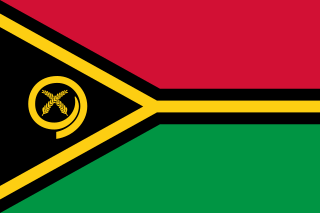 W
WThe Aramean flag or Syriac-Aramean flag is the ethnic flag designated for the Arameans, intended to represent their nation and homeland as well as the Aramean diaspora. The flag was first used in 1975 by the Aramean Association of Sweden and later adopted and redesigned by Bahro Suryoyo the Aramean journal which is part of the Syriac federation in Sweden. The World Council of Arameans, an international non-government umbrella organization, which is recognized by the United Nations officially choose the flag to represent the Syriac-Aramean nation worldwide on 16 July 1983 in New Jersey. The design was based on the Winged Sun symbol, replacing the sun by a torch symbolising the Holy Spirit in Christianity.
 W
WThe flag of Iran, also known as the Three-Coloured Flag, is a tricolour comprising equal horizontal bands of green, white and red with the national emblem ("Allah") in red centred on the white band and the takbir written 11 times each in the Kufic script in white, at the bottom of the green and the top of the red band.
 W
WThe flag of London, Ontario, Canada, was originally designed in 1980.
 W
WThe unofficial flag of the Marquesas Islands was first raised on December 14, 1980, upon the opening of the airport on Nuku Hiva, and has been regularly used since 1994. A simplified version, without the tiki design, is sometimes flown.
 W
WThe flag of Newfoundland and Labrador was introduced in 1980 and was designed by Newfoundland artist Christopher Pratt. The flag design was approved by the House of Assembly of the province of Newfoundland, Canada, on May 28, 1980. It was flown for the first time on Discovery Day, June 24, 1980. The name of the province was changed to Newfoundland and Labrador by an amendment to the constitution of Canada in December 2001. This was at the request of the provincial legislature.
 W
WThe Purépecha flag is the official flag of the Purépecha people, an Indigenous nation in Michoacán, Mexico. This flag consists of four fields of four colors with a shield and the words Juchari Uinapekua below the shield. This flag is unique in its kind and emerged in the town of Santa Fe de la Laguna in 1980. It is an ethnic flag of Mexico.
 W
WA silver fern flag is any flag design that incorporates a silver fern, and is usually a white silver fern on a black background. The silver fern motif is associated with New Zealand, and a silver fern flag may be used as an unofficial flag of New Zealand, to which it is endemic. The silver fern itself is a quasi-national emblem, being used for various official symbols, including the coat of arms of New Zealand and the New Zealand one dollar coin. A number of New Zealand sports teams, such as the cricket team, the Silver Ferns and the All Blacks, use similar silver fern flags as part of their official merchandise. The All Whites association football team use a white background and a black version of the fern.
 W
WAs a result of the Syrian Civil War since 2011, there are at least two flags used to represent Syria, used by different factions in the war. The incumbent government of the Syrian Arab Republic led by the Ba'ath Party uses the red-white-black tricolour originally used by the United Arab Republic, while Syrian opposition factions such as the Syrian National Coalition use the green-white-black tricolour known as the ''Independence flag'', first used by Mandatory Syria.
 W
WThe flag of Vanuatu was adopted on 18 February 1980.
 W
WThe national flag of Zimbabwe consists of seven even horizontal stripes of green, gold, red and black with a white triangle containing a red 5-pointed star with a Zimbabwe Bird. The present design was adopted on 18 April 1980. The soapstone bird featured on the flag represents a statuette of a bird found at the ruins of Great Zimbabwe. The bird symbolises the history of Zimbabwe; the red star beneath it officially stands for the nation's aspirations but is commonly thought to symbolise socialism, and the revolutionary struggle for freedom and peace. The design is based on the flag of Zimbabwe's ruling party, the Zimbabwe African National Union – Patriotic Front.